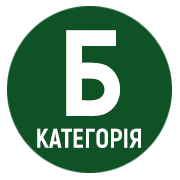PSYCHOSEMANTIC REPRESENTATION OF THE ENEMY IMAGE IN THE UKRAINIAN MEDIA SPACE (AFTER THE FULL-SCALE INVASION OF RUSSIA ON THE TERRITORY OF UKRAINE)
DOI:
https://doi.org/10.32782/psy-2023-1-1Keywords:
associations, media space, enemy image, image of the world, full-scale invasion, psychosemantics, representation, worldviewAbstract
This study examined approaches to interpreting the concepts of «worldview» and related meanings in psychology in the context of their influence on the formation of the enemy image. Based on the analysis of scientific literature, a theoretical model was developed. Quantitative and qualitative analyses were conducted based on the obtained empirical data, with mathematical methods being significant. Changes in the popularity of content consumption resources depend on the age characteristics of the audience. Individuals in early adulthood actively use social media, news websites, and interpersonal relationships to obtain information, while television is the most popular resource among the older generation. The overall context of the obtained associations in the studied group of individuals in early adulthood has a significantly negative character and is related to the representation of the enemy as a danger and threat from a potential enemy. Among respondents of old age, the associations indicate that the enemy image is predominantly perceived negatively and is associated with concepts of evil, fascism, and war. After processing the results of the associative experiment using factor analysis, it was established that the research hypothesis regarding older generations having more associations related to long-lasting historical events is confirmed. Younger generations, having experienced life in a more democratic environment, may have views on the enemy image that are influenced by current events. Given the results of content analysis, the psychosemantic representation of the enemy image in the Ukrainian media space after the start of Russia’s full-scale invasion can be described as malevolent, hostile, and negative. The assumption that the psychosemantic representation of the enemy image in the media space depends on the cultural-historical context and social situation before and after 2014 was accepted. The psychosemantic representation of the enemy image in the Ukrainian media space after the full-scale invasion predominantly reflects a negative image associated with conflict, aggression, and authoritarianism.
References
Кириченко В. В. Психологія образу ворога у масовій свідомості. «Філософія, релігія та культура в глобалізованому світі» : Всеукраїнська науково-теоретична конференція з міжнародною участю, 23 листопада 2015 року : матеріали доповідей та виступів / за ред. П. Ю. Саух [та ін.]. Житомир : Видавець О. О. Євенок, 2015. С. 69–74.
Кириченко В. В. Психологічні аспекти безпеки особистості в умовах інформаційної війни. Психологія свідомості: теорія і практика наукових досліджень : матеріали Міжнародної науково-практичної конференції, 9 грудня 2022 р., м. Київ – Львів – Торунь : Liha - Pres, 2022. С. 44–46.
Артем’єва О. Ю. Основи психології суб’єктивної семантики. За ред. І. Б. Ханіної: Наука. Сенс, 1999. 128 c.
Redfield R. The primitive world view. Proceedings of the American Philosophical Society. 1952. Vol. 96. № 1. P. 30–37.






